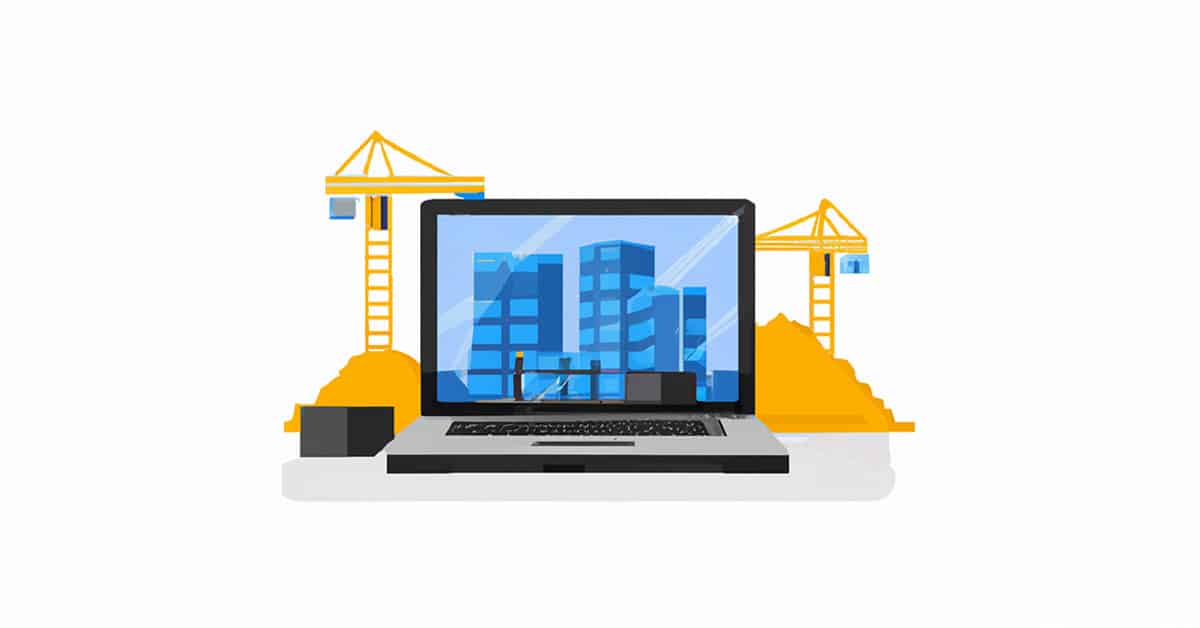When you think of construction, what comes to mind first? Gigantic cranes, hard hats, the clamor of machinery… or maybe just Bob the Builder memes?
We get it; they’re pretty good. But in all seriousness, let’s dive a bit deeper today and talk about an equally exciting and important aspect of any construction project—construction inspections!
Construction inspections are kind of like a referee in a soccer game—they keep everyone playing by the rules, ensuring construction regulations and standards are being enforced and upheld. Without them, structures could be built incorrectly or even unsafely. That’s why understanding the basics of construction inspections isn’t just interesting, but a vital part of any construction project.
In this guide, we’ll dissect what construction inspections are all about, why they’re so important, and the different types you might encounter on your construction journey. Spoiler alert: it’s more than just pointing at things and saying, “This is good” or “This needs work.”
In addition, we’ll also introduce you to the digital age of construction inspections by going over innovative construction inspection software. Because, let’s be real, everything’s going digital these days—even construction inspections aren’t immune to the tech revolution!
According to the U.S. Bureau of Labor Statistics, around 14,800 job openings for construction and building inspectors are projected each year, on average, over the next decade. That’s about as fast as the average for all occupations, and with more and more buildings sprouting up like daisies, we can see why!
So, let’s dust off any preconceived notions about construction inspections and start from scratch. Whether you’re a seasoned professional looking to brush up on your knowledge or a student dipping your toes into the construction world, this guide is here to help you better understand everything about construction inspections.
What Are Construction Inspections?
At its core, a construction inspection is a detailed review or examination of a building project during and/or after its construction. And no, it’s not just a matter of someone with a clipboard checking off boxes.
Think of construction inspections as the watchful guardian angels of the construction world. They ensure that all the work being done on a construction site complies with the relevant codes, standards, and regulations. If construction is a game of Jenga, the inspectors ensure the pieces aren’t pulled out randomly, causing the whole structure to potentially tumble!
This process involves checking everything from the foundation, framing, and roofing to the plumbing, electrical systems, and even the HVAC installation. It’s like a full physical check-up but for buildings, ensuring everything is in proper operating condition.
Construction inspections are generally carried out by professional inspectors who have a deep understanding of the construction process and the various building codes and regulations. They’re like the Sherlock Holmes of construction, finding issues before they become major problems.
In a nutshell, construction inspections aim to verify that the work being performed on a project adheres to the approved plans and local building codes. This ensures the safety, accessibility, and energy efficiency of the building.
And get this, according to the National Association of Home Builders, each single-family home generates an average of four jobs and $111,000 in tax revenue. That’s a whole lot of responsibility, and construction inspections help ensure that these projects are properly up to snuff.
The Different Types of Construction Inspections
Let’s review some of the most common types you might encounter, whether you’re actively on the job site or just starting to learn about the construction field.
👷♀️ Daily Inspections
Think of daily inspections as your one-a-day multivitamin—they help keep your project healthy and on track. These inspections are carried out daily and generally include a thorough check of the site to identify any potential issues early on.
They might look at things like the condition of equipment, the progress of the work, and even the weather conditions. Daily inspections are the best way to catch minor problems before they become big, project-delaying headaches.
🔍 Quality Control (QC) Inspection
This is where the “every pixel counts” meme comes into play, except we’re not talking pixels—we’re talking construction elements! QC inspections are all about ensuring the quality of the work done and materials used meet the required standards.
This might include checking the strength of the concrete, the quality of the wood, or the electrical wiring. It’s like that moment when you carefully inspect your online shopping delivery to make sure everything’s as it should be.
🩺 Health and Safety Inspection
Not all heroes wear capes—some wear hard hats! Health and safety inspections focus on ensuring that the construction site is a safe environment for workers. This means checking things like personal protective equipment (hard hats, safety boots, high-vis vests—you name it!), scaffolding, and even the provision of first aid facilities.
Fun fact: according to the Bureau of Labor Statistics, about 2.6 million nonfatal workplace injuries and illnesses were reported by private industry employers in 2021. The point of safety inspections is to bring those numbers down as much as possible.
🏗️ OSHA Inspections
Last but certainly not least, we have OSHA (Occupational Safety and Health Administration) inspections. If construction had a principal’s office, this would be it. OSHA is a big deal in the United States, and its inspections are all about ensuring compliance with safety and health regulations to prevent workplace injuries, illnesses, and deaths.
OSHA inspections can be triggered by a variety of things, like a reported workplace incident, a complaint, or even just a planned inspection. The inspector will evaluate the site for any violations and issue fines if necessary. It’s like having your parents check your homework—only this homework could save lives!
Benefits of Construction Inspections
So, we’ve covered what construction inspections are and the different types you might come across on a site—but let’s get to the real juicy stuff: the benefits! Why do we even bother with all these inspections in the first place?
1. Quality Control
Just like Gordon Ramsay in a kitchen, inspections ensure the quality of your construction project is up to scratch. Inspectors help maintain the high standards expected in the industry by regularly checking the materials used and the work being done—and the outcome? A high-quality, well-constructed building that is built to last.
2. Safety Assurance
You know what they say: “Safety doesn’t happen by accident.” Regular inspections play a crucial role in ensuring the safety of workers and, eventually, the people who will use the building. They’re effectively the “health and safety police” on-site, ensuring all safety protocols are followed and that potential hazards are promptly identified and dealt with.
3. Risk Mitigation
Inspections are like the fortune tellers of the construction world, helping identify potential issues before they become major problems. By catching these early, inspections can help avoid costly delays or even prevent litigation down the road. As Benjamin Franklin once said, “An ounce of prevention is worth a pound of cure.”
4. Saving Time and Costs
Last but definitely not least, regular inspections can save you both time and money in the long run. Think about it: catching a mistake early on is always easier (and cheaper) to fix than something that has been left unattended for a while. According to a report by the Construction Industry Institute, rework expenses (fixing mistakes) costs the American construction industry over $15 billion annually—ouch!
In essence, construction inspections are a bit like the eyes and ears of your project, working tirelessly to ensure everything runs smoothly, safely, and successfully. Now isn’t that a benefit we can all appreciate?
Best Practices & Resources For Inspections
Knowledge is power, and in the construction world, power comes with safety, efficiency, and some sweet savings. So, what are the best practices for conducting construction inspections? Let’s find out!
1. Use a Checklist or Construction Inspection Template 📝
This is the heart and soul of any inspection. Having a comprehensive checklist or construction inspection template ensures nothing slips through the cracks. Think of it as your shopping list for the grocery store—without it, you might forget to pick up that all-important milk or, in this case, check and review that crucial safety protocol.
🔗 Inspection Report Templates: Download & Print for Free!
Templates might include items such as the state of PPE, fire safety equipment, scaffoldings, electrical systems, and much more. To get started, you might find this OSHA form template helpful.
2. Regular and Thorough Inspections 🕵️♀️
Remember, inspections are not a one-and-done deal. They need to be regular (yes, even when it feels like groundhog day) and comprehensive. Each aspect of your construction project should be inspected at different stages. This ensures that all components are reviewed and helps catch any issues early on.
3. Train Your Inspection Team 🧑🎓
Inspector Gadget didn’t get his skills overnight, and neither will your inspection team. Regular training is essential to ensure your inspectors are up-to-date on the latest safety protocols, building regulations, and inspection techniques. The International Association of Certified Home Inspectors offers a variety of resources and training programs for inspectors.
4. Use Technology to Your Advantage 📱
We’re in the 21st century, people! You have to take advantage of the wide array of inspection software available. These tools can streamline inspections, offer digital checklists, and even provide real-time updates. Software solutions like Workyard can help make your inspections a breeze.
5. Document Everything! 🗂️
Documentation is key in inspections. It’s like your receipts in case of a warranty claim—if it’s not documented, it didn’t happen. This includes photographs, written records, and even videos of the inspection process. Proper documentation could prove invaluable in case of disputes, insurance claims, or for your own future reference.
6. Follow Up and Act 🚀
Last but not least, don’t forget to act on the findings of your inspection. It’s kind of like getting your test results and not studying the areas you missed or messed up on. Make sure to correct any deficiencies or hazards identified during the inspection, and always, always follow up!
The Best Construction Inspection Software
Let’s go over how software, and more specifically, Workyard, is revolutionizing the construction inspection world.
Remember the good old days when inspections meant lugging around hefty binders, stacks of papers, and making frantic calls? Yeah, I don’t miss them either. Well, say goodbye to that chaos and say hello to the power of software! Just like how emails replaced carrier pigeons, construction inspection software makes life easier, more efficient, and, most importantly, more accurate— this is where Workyard comes into play.
1. Bye-Bye, Paper Checklists
Workyard laughs in the face of traditional paper checklists and outdated processes. With Workyard, you’re cutting down on overall paper waste, storage concerns, and common human error. When you utilize digital checklists, you won’t have to worry about losing those precious notes in a fire or struggling with comprehending illegible handwriting.
2. Centralized Information Hub
With Workyard, you can say ‘adios’ to that dreaded file cabinet. It lets you document and store all your vital field data in one central location. Need past data? It’s just a click away! It’s like having a super-organized personal assistant who never forgets anything.
3. Streamlined Communication
Are you still sending emails and making phone calls? Workyard has something to say about that. This software improves jobsite communication and eliminates those time-consuming and often inefficient methods. It’s like going from snail mail to instant messaging.
4. Task Management Made Easy
Workyard isn’t just about storing data—it’s a project management powerhouse. Schedule inspection tasks, specify details with notes, checklists, and attachments, and even track how much time was spent on each job.
So, to all the construction professionals out there, isn’t it time you stepped into the future of construction inspections? Make your life easier, your work more efficient, and your projects more successful with Workyard.
Ready to experience the difference? Sign up for a free trial of Workyard today. It’s a game-changer, trust us—your clipboard will thank you.




